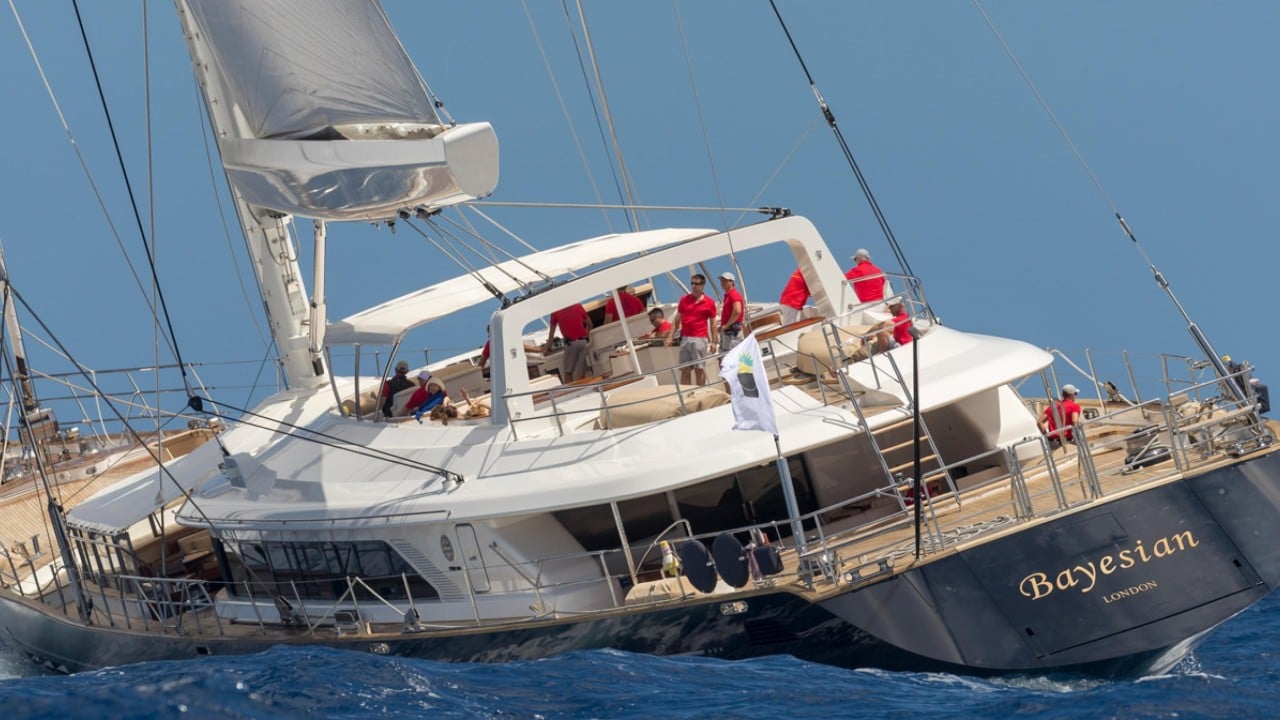Mike Lynch, a controversial tech tycoon, remains missing after his superyacht sank off the coast of Sicily on Monday.
The 56-metre (183-foot) Bayesian superyacht was carrying 22 people when it sank during stormy weather near Porticello, Palermo.
Fifteen people were rescued, including Lynch’s wife, Angela Bacares. Six passengers remain missing.
One body was recovered and is believed to be that of Recaldo Thomas, a Canadian-Antiguan chef who worked on the vessel, according to BBC News.
Divers on Wednesday entered the superyacht after breaking a window. They now have to contend with narrow corridors and floating debris as they search for survivors.
There are several theories about what caused the vessel to sink, but none carry much chance of survival for the missing.

A dangerous weather phenomenon
The City Council of Bagheria said the wreck was likely caused by bad weather in a press release published on Monday.
A strong storm hit the area about an hour before the superyacht sank, it said.
Witnesses said they saw a waterspout – a tornado-like column of wind found in water – before the sinking, BBC News reported.
According to data from the International Centre for Waterspout Research, cited by the BBC, there were 18 waterspouts off the coast of Italy on Monday.
Matthew Schanck, a maritime search and rescue expert, said the situation was “unprecedented” because it’s difficult for meteorologists to predict when waterspouts will occur.
Rick Shema, a consulting meteorologist, said waterspouts are rare and can be triggered by unusually hot weather.
Shema said the water was 28.7 degrees Celsius (83.7 degrees Fahrenheit), which was hotter than an average day for the area.
“Hurricanes can form at 80 degrees (Fahrenheit). This was almost four degrees higher than that,” he said.
Tornadoes usually reach up to 480kmh (300mph), while waterspouts can reach 120mph, Shema said.
“Even an average tornado, 120 miles an hour, that’s a lot of wind,” he said, adding that it would “heel the boat over for sure.”

The ship’s mast could have been damaged
Other factors may have contributed to the superyacht’s fall – but the details are murky.
Karsten Borner, the captain of another yacht who witnessed the sinking, told Italy’s Corriere della Sera Daily that he saw the ship’s mast “bend and then snap,” according to part of the interview cited by the BBC.
However, Marco Tilotta, a spokesperson for the Palermo fire service divers’ unit, said the ship had been seen lying on its side fully intact, BBC reported.
“If the mast was broken, that would be a significant thing that would be reported,” Schanck told the BBC.
Schanck said it’s possible the mast could have been damaged during the sinking, but the conflicting reports make it difficult to say.
He said it’s also unclear if the keel – a weight underneath the boat to keep it balanced and upright – was deployed.
Either way, he said the construction of the ship was unlikely to be a contributing factor, as it was “designed and constructed to rigorous international standards.”
“There’s no indication that there’s any sort of breach of any international maritime construction or safety standards,” he said.

Open doors and windows
Soaring temperatures in the area may have caused passengers to leave windows and doors open.
This would have allowed the yacht to become filled with water quickly during the storm, he said.
“I imagine all the doors were open because it was hot, so there were enough hatches and doors open that it filled with water very quickly and sank like that,” Sam Jefferson, former editor of the magazine Sailing Today, said.
“There has been water ingress into this vessel. That’s why it’s at the bottom of the seabed,” Schanck said.
However, he said it’s not possible to say whether this happened because of open doors or windows, structural damage to the mast, or because the ship became “heeled over” during the bad weather.

Survival for the missing is unlikely
Italian authorities are investigating the exact cause of the sinking, while search crews continue to look for the missing passengers.
A spokesperson for the local fire department told The Independent that the search is “complex,” adding that divers operate in 12-minute underwater shifts.
There could be survivors in the ship’s air pockets. However, Schanck told USA Today that the chance of survival for those missing seems unlikely.
“My professional opinion is that the casualties will be located within the vessel,” he said.
“There is a risk versus benefit in all maritime search and rescue incidents,” he said. “Where we start transitioning to a recovery phase, that line shifts.”
This sentiment was echoed by Luca Cari, a spokesperson for the local fire service. Speaking to ABC News on Wednesday, Cari said it remains a “rescue operation” rather than a recovery operation. However, he noted that finding survivors in air pockets would be “rather improbable.”
It’s been more than 48 hours since the ship sank. Nick Sloane, an engineer who worked on the Costa Concordia salvage operation in 2014, told Sky News that there’s only a “very small window of time” to find those who could be stuck in air pockets.
“You’ve got a maximum of two to three days to try to get someone out, so the next 24 hours are critical,” he said on Wednesday.
This article was first published by Business Insider


